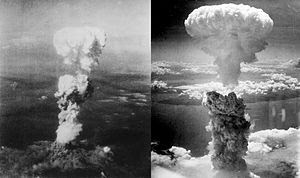A millisievert is a unit that measures the biological risk of exposure to radiation.
Per year, a man absorbs between 110 to 150 millisieverts radiation from various sources. Acute radiation sickness begins at 1,000 millisieverts.
Nuclear radiation is part of our lives. Sunlight is a natural radioactive source, the sand on the beach, when television is on. Living in a masonry home (0.07 mSv), chest X-ray (0.1 mSv), cosmic radiation at sea level (0.26 mSv); whole-body scan (10 mSv), between reactors at Fukushima Daiichi (400 mSv), firefigthers at Chernobyl in 1986 (16,000 mSv).
In a nuclear explosion or some accidents with radioactive sources, people get exposed to radiation throughout the body, but the doses may be different in each tissue. Each body tissue reacts in a certain way.
The somatic effects are classified into immediate and delayed based on a limit, adopted by convention of 60 days. The most important of the immediate effects of radiation after whole body exposure to relatively high doses is the Acute Radiation Syndrome (ARS). The delayed effect is of greater relevance to malignancy by radiotherapy, which only appears many years after irradiation.
The damages that radiation can cause in man are:- Absorption from 0 to 25 mSv - nothing happens.
- Absorption from 25 to 50 mSv - reduction of white blood cells.
- Absorption 100 to 200 mSv – nausea, intense reduction of white blood cells.
- Absorption of 500 mSv - 50% probability of death in 30 days.
- Prevention of cell division.
- Damage to cell division.
- Changes in the genetic structure of reproductive cells.
- Total destruction of the cell.


